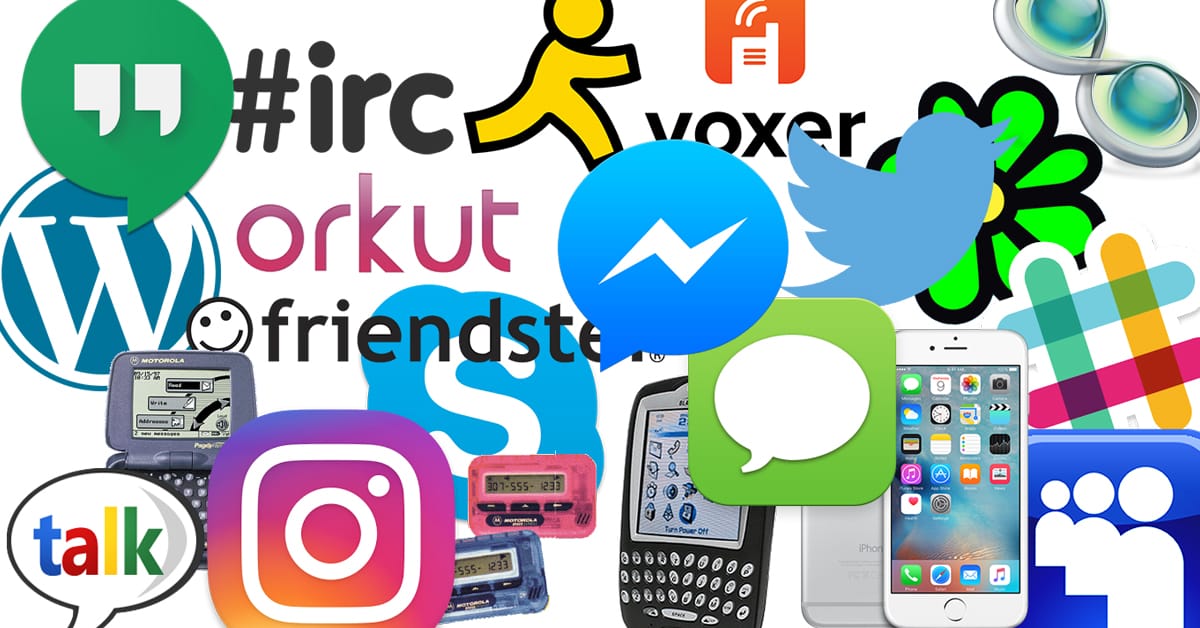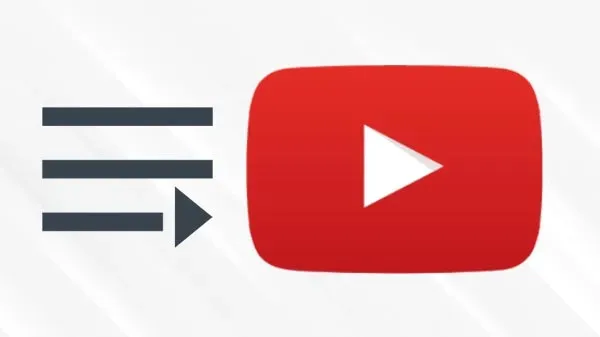History of online communication and why it all still sucks

For the last few years I’ve been thinking a bit about how I’ve communicated to people online. There is a lot of history here and I think looking at the history again may help with figuring out where we will end up in the future. I have a few gripes about our current forms of communication and the various silos made and looking back you can see that things really haven’t changed.
The history of communications forms over my lifetime
BBS
“Back in the days when I was a teenager. Before I had status and before I had a pager” I grew up calling BBSs using my computer and land line phone equipment to make it happen. I’d look in the Pennysaver and find phone numbers of BBSs and give them a call using a terminal program. It was like a website but where only 1 person could be on it at a time, you’d post messages, download stuff that took forever to get and goofed around. If you dialed into a multi-node BBS you could talk with other people that have dialed in at the same time and chat. I met quite a few friends this way, met many in person and was one of the first ways I connected to people that I didn’t know without leaving my home.
Effectiveness – Interacting with people required you to connect to the BBS (when their line wasn’t already busy) and leave or receive messages for other people on there. A dedicated phone line was a must when using this old method of communication.
College Shell Access using SLIRP / TIA
I had a friend that provided me with access to his college account when I was a freshmen in highschool. With a simple call to a local number I was able to connect to the college’s network access and run either slirp or TIA to turn that terminal shell into a TCP/IP connection on my Windows computer. The Internet and all its glory were made available to me. WAIS, Archie, Veronica, the web, gopher, telnet and more were at my disposal. Interestingly enough connecting to BBS’s using this method was something I still did for a while with IRC replacing it.
What would there be without email? Before spam email was awesome, you craft an email and send it to someone they would get it and reply back Look At This. Spam gets in the way of all of this cluttering up your inbox with stuff. Email much like postal mail is a necessity.
Effectiveness – Great for long winded messages to people but with all the bloat that comes with it (spam) it makes it a chore to dig through each day.
Prodigy / Compuserv
I was a bit too young to have used these services effectively but I did try them back in the day. AOL seems to be the one I used
Pager
“Half way home and my pager still blowin’ up” – For I think $10 a month + the cost of the Motorola Bravo I got assigned a phone number that when called would allow you to page me. You would enter DTMF tones (the numbers on the keypad) and it would send them to my pager. As wikipedia puts it “Numeric Pagers contain a numeric LCD display capable of displaying the calling phone number or other numeric information generally up to 10 digits. The display can also convey pager codes, a set of number codes corresponding to mutually understood pre-defined messages.” With this I’d be able to send codes to friends and get responses back from them. This required the use of a home phone or payphone (quarters or something more elaborate)
Effectiveness – People carried pagers with them all over the place. The need for a phone to be nearby to check messages or to respond made it a bit frustrating to use.
Alpha Pager
As pager technology evolved we were able to send one other pages using alpha text doing away with the 80085 and other things we’d send one another thinking we were funny.
Effectiveness – People carried pagers with them all over the place and with the ability to send words to them allowed for more efficient communications. It was one way but you were able to provide more data.
AOL
Well, America Online was one of the few places where people would get together early on in my life and interact with one another in various chat rooms. I mainly chatted with people via its built-in buddy list messaging service.
Effectiveness – With the ability to send a “you got mail” email to a friend on the service it made it easy to stay connected regardless if you were connected or not. Buddy lists and chat rooms made it easy to interact with people in real time.
IRC
The transition from BBS to the Internet lead to using IRC as the method of communication. Finding a common IRC network your friends would connect to one of the servers in that network and then selecting a channel (prefixed with a # in it’s name) you could communicate with one another in a common channel. Efnet being the one that most of my friends used with a few other such as dalnet and freenode to follow.
Effectiveness – IRC required you to be connected to the network to send an receive messages from others. Depending on how you connected you could scroll back to play catchup and if you used a bot like an eggdrop bot you could have it monitor the room notifying you if anyone mentioned you by name. Multiple IRC networks existed so dealing with connections to multiple servers made this a challenge but if you stuck to one network of servers you’d be ok.
Instant Messengers
ICQ, AIM (AOL Instant Messenger), Windows Live Messenger, IRC, MySpace, Jabber & Google Talk were protocols used to message someone. At the time Blackberry, Windows mobile and computers could communicate with one another using these protocols. ICQ was weird because it used a unique number that was shared with friends instead of a phone number or even a username. Many people that grew up on AOL ended up continuing to use their “screen name” to message one another. AOL bought ICQ and added in some interoperability between the two. Having so many protocols and services required you to have each of these app installed on your computer to talk to all of your friends.
Effectiveness – IM changed the game for me in being able to interact with people at home and at work. Without having the need to call somone IM was pretty amazing for back channel discussion. Knowing the online status of someone made it easy for you to know if someone was available to talk or not.
One app to rule them all
Trillian came on the scene and tied all of these protocols together somewhat. Acting as an aggregator of sorts Trillian would connect to each of these services and log you into them. This was the first time I was able to wrangle all of my friends in 1 app and interact with them the way they wanted to be. Not everyone used AIM or ICQ and some even used Windows Live or Myspace so having one app that did all of that was super helpful. Later I used IM+ and Pidgin on the Mac.
Effectiveness – This and apps like it allowed for one app to connect all of the protocols together for you. There were times when things like video chat wouldn’t work due to it being a proprietary feature of the protocol in question but I loved using this thing.
Two Way Pager
“I’m too cold, Motorola, two way page me, c’mon” – When these came out I was working for a company that issued what I called a “barbie laptop” to each one of us. These were pagers in shape but had a flip open screen allowing you to send a message to someone using the mini keyboard below you could send text messages emails using it. AIM and other IM services made it to this device. Mine was a Motorola.
Effectiveness – It was a close as we could get to having a smartphone back then.
Text Messaging
As phones got a bit more sophisticated you could use T9 messaging to send a text message using the 1-9+0 keys on the keypad to message someone else’s phone. Later phones got better at this with keyboards and other methods of inputting words. Once phones had cameras sending photos to one another using MMS started to get popular.
Effectiveness – Texting took a while to get started here in the US where other countries had the lead in this. Being able to send a message from your phone ment you could effectively message anyone that you had in your phones contact list and talk with them.
Blogging & Livejournal
I kept a livejournal for many years and wrote in it daily. Livejournal allowed for people to leave comments on your entries and interact with one another either publicly or privately. This later lead me to blogging and migrating all of my live journal posts over to my blog allowing me to save them for posterity. Blogging later became a business for me building websites, podcasts and other things.
MySpace, Friendster, Orkut
All of these services evolved over time, taught people how to write poorly coded html and created businesses offering up ways for people to customize their pages.
Blackberry
“Out the country but the BlueBerry still connect” – I was never into the proprietary blackberry messaging service but I did have one for work. I used IRC and IM on it as well as sending text messages, all of this was just amazing to me.
Effectiveness – Internet on my hip with all the various chat protocols at my disposal made it very efficient and effective.
Skype
Skype became a great way of doing text chat like IM but also video chat. Skype got bought by Microsoft and the amount of features that were added to the thing drove me away from it. They tried to make it do everything when it just needed to do video REALLY well.
Effectiveness – Back in the day it crashed a lot and long conversations would become “Cylon” sounding like one of the toasters from Battlestar Galactica.
IRC (revisited)
I revisited IRC just on a whim to see if anyone was there still. Using mIRC on a Windows computer I connected to Efnet and #losangeles #california and ended up finding my future wife still using it. She brought me back to IRC. IRC was also the online group chat that WordPress developers used to work with one another on building WordPress.
Effectiveness – IRC brought me to my wife, of course it was effective! Real-time messaging in a group environment is what made this method super effective.
Modern Communications
iMessage
With the iPhone now on the scene text messaging on it was amazing. Little green messages going back and forth between my iPhone and any phone my friends had, blue messages between iPhones circumvented the SMS network and just used the Internet allowing for richer conversations between Apple devices. This lead to emojis, sending higher quality photos with and without MMS and statuses on if and when someone received your message. iMessage on the Mac – This was a game changer for iMessaging because I could message anyone using my computer just like I did on my iPhone. Copying text from website and sending it to people or sending copied photos made this method of communication amazing to me. Apple later added the ability to SMS from the Mac using your iPhone as a conduit
Effectiveness – Read statuses and data only messaging made communicating with people easy. Interrupting people in the middle of their workday, not so much.
IRC (again but different)
As a WordPress guy I found that many people were using IRC as their messaging platform of choice for communicating with one another online. Having grown up on IRC I thought it was cool but comical that people were still using this method of communication.
Effectiveness – All the like minded people all in the same place at the same time. Super efficient but required you to be logged into IRC to know if someone was messaging you.
Facebook Messenger
Since most people I know use Facebook and those people that I know I may be “friends” with on Facebook using it’s messaging platform seems like the simplest way to get ahold of them. I like this one a lot since
Google Talk / Google Hangout
Google Talk (gTalk) lead to Google Hangout a way for people (up to 10 of them) to video chat with one another, WPwatercooler has been using this for over 3 years streaming live to the internets and playable from YouTube.
Effectiveness – Depending on how you use it the effectiveness can be different. I use Google Hangout all the time to hold meetings with my coworkers and to record podcasts with distant friends and colleagues. I don’t use Google Talk at all but I use Google Hangout all the time.
Slack
I have a love/hate relationship with slack, and many of my friends to as well. My main beef with it is it’s very much like IRC where you can be connected to different “teams” and each time can have multiple slack “channels”. It seems like every podcasts, web service, WordPress theme and plugin has it’s own publicly facing slack team with many channels with it.
Effectiveness – It’s annoying to have the same friend in multiple “teams” but you don’t know which one you should message them on. It’s also annoying to try and figure out which team someone messaged you on if you want to reference something they said. At some point I see slack making the user to user messaging more “Trillian” like instead of dealing with teams to talk to a person directly.
I love twitter and have been using it for many many years. What started out as SMS based (text 40404 to interact with it) has become THE way to message anyone you like or no one at all. Marketing, hashtags and now photos and video, this thing has changed so much since it first started. Twitter’s ability for you to direct message someone means that anyone is available to me at any time.
Effectiveness – The limit of 140 chars makes for posting long tweets interesting leaving people to tweet storm when they REALLY have something lengthy to say. DM’s are what I use this for the most outside of promoting what I do and what I’m doing that I want people to join in on.
With what started out as a place to post pictures has become a marketing haven for people looking to get you to by something. With self-imposed limitations such as unclickable links in photo descriptions and one link in your bio to get people to go to your website it’s been interesting to see how Instagram works and how effective it’s been working for marketing people.
Effectiveness – For sharing pictures this thing is amazing without the ability to form lists of groups of people it makes it hard to keep up with everyone you want to at once. Hashtags tie everything together when used properly.
Snapchat
Snapchat allows you to take pictures and video and save them for your followers to watch or send directly to a group of friends. This service has taken the ephemeral approach of not storing your photos and videos for later and just tossing them aside when they are done. With the ability to save your photos and videos locally but not on by default it seems this service isn’t about shaving your memories but rather sending content out into the ether.
Effectiveness – You only see people you follow and they only see you if they follow you. It’s the polar opposite of Twitter and unlike twitter it doesn’t have a public feed.
Voxer
The latest one to hit the scene for me is Voxer, I call this the Mom CB Radio because the people I know use it the most are the moms in my wife’s inner circle. This is where quick responses to requests and ease of use come into play. If you were traveling with someone in two different cars using Voxer is the easiest way to talk to one another “Pull off at this next rest stop” doesn’t warrant a full-blown phone call yet sending a text just isn’t safe. Hand free and all sort of other things are available and work very well.
Effectiveness – Quite effective for interacting on the go when reading a text just isn’t the best way to go about things. Allows for content and emotion to be added into the conversation when texting strips that away entirely.
What I currently use
Messages
I love Apple’s messages but I really wish that Android users could use the same protocol to interact with people. When sending a group message if there is 1 Android in the mix the message drops down to “green” indicating that all messaging is being sent over SMS and not iMessage. sigh
Slack
I’m part of a handful of Slack teams each with multiple channels in them. Due to this, I don’t see the effectiveness in any of it when I need to decide which “team” I should message someone on and that someone is in the same handful of teams I’m in. For me, it’s more of a distraction than anything else.
Blogging / Podcasting
One of the best ways for people to put digital pen to paper and write out all that I have to say on a subject. There are no limits and the content can be crosslinked to all the various social networks to be promoted and pushed out for people to notice and then read. Podcasting has really been a great way to provide a richer and personal form of broadcasting to many people without losing any emotion that text does.
I love this service for its simplicity, there are a few things I wish it did different (lists of people for one) but, in the end, it’s a great way to share a highly manicured photo or just a random snap.
Snapchat
I consume more than I share on this service.
Voxer
I use this with my wife and her friends it works well, context and emotion aren’t lost in like text-based communication.
My observations on modern communication
As I become older I’m realizing that time is a precious commodity and interrupting someone day to ask them a question or to just say “Hi” has been something I’ve been thinking about for a while now. What’s the best way to just say “Hi” to someone and what network, protocol or method should I do it on? Do I need to know which one is best for them and how do you keep track?
In your pocket
Most of these services are in your pocket but many of them are passive. Twitter is very passive, Instagram is too, same with Snapchat. Messages / SMS seems to be the one I know when I send a message to someone I have a high chance of interrupting them and what they are doing. This makes me think, is Messages / SMS they way to connect to someone to just say “Hi” and is there a way to make the message casual without bothering someone?
“I sent you an email, go check it”
You’ve seen this on social media, someone will message you and say “I sent you an email, go check it”. I guess you can’t get away from email but you also can’t get away from people telling you they emailed you either.
All the notifications bubbles
All of these methods typically come with some sort of notification bubble or notification count or even a popup notification indicating a message is waiting for you. For some getting these numbers to go away is almost a game to them and also a bit of an OCD to get them cleared out as quickly as possible. This can lead to “Inbox Zero – with a vengeance” with people just dropping quick replies to get the bubble to go away or worse yet, never responding.
What about Instant Messaging?
I for the most part I have done away with AIM, ICQ, IRC, Skype, Google Talk type messaging services and using iMessage, SMS, Twitter, Facebook and if I have to, slack.
How I like to be communicated with
I recognize that people have a primary method of communication and mine is Messages or SMS. The reason being is that it for the most part, always works. Messages on iOS and Mac “just work” as long as I have mobile cell service. SMS is a fallback and that I suppose would only work if I was using the phone number at the time. If I traveled internationally I can see this being an issue which may lead to using something like WhatsApp or Viber, it’s not a concern of mine but may be for others.
Prioritized list: iMessage, SMS, Twitter, Facebook and if I have to, Slack.
Why it all still sucks
If I had to boil it down to why it still sucks it would have to have to be that things are still so willy nilly and all over the place. Slack segments their “teams” or groups of people with no connection between the various personas you have on each of the teams. It goes back to the days of AIM, ICQ, MSN, etc where each of these are different but this is all from the same company. Twitter has a common public thread but no groups. Facebook has a common public place, your page your posts and then group and direct messaging. If slack acted like Facebook with 1 login and teams that you were on that I think would fix some things for me. Asana does this with your one account and then multiple organizations you can be involved in.
From there you have iMessage, Twitter, Facebook, Skype, Google Hangouts all separate yet all the doing roughly the same sort of thing when it comes to direct messaging. I think it still sucks because you still have various clients (apps) you need to use to hunt down who you spoke to where. Add in brand marketing and dealing with multiple brands, personas and such and this thing becomes a huge mess.
Wrapping up
- How are you navigating the many methods of interaction with people you know in person and only online?
- How do you prioritize the method to use for each person and how to you keep up with it all?
- How do you make a passive conversation not be an actionable item for someone or make it so it warrants their full attention?
- What methods do you want people to message you?
Let me know in the comments!




